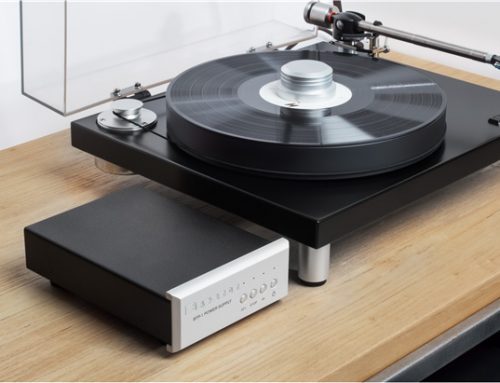When it comes to putting together an audio system, for a home theatre or a two-channel stereo, there is no avoiding a decision on loudspeakers. Speakers are an essential part of any audio system and hence spending some time getting to know more about them is always beneficial. Today there are many types of loudspeakers including satellite, in-wall, on-wall, subwoofer, planar, electrostatic and so on, each of which have their own specific purpose; however, one of the most common questions that comes up with audio enthusiasts is…“should I buy bookshelf (stand-mount / compact) loudspeakers or floorstanding (tower) loudspeakers?” Though this question may at first seem simple to answer, there is in fact much to consider in making a decision between these two primary types of loudspeakers.
The decision between a bookshelf speaker and floorstanding loudspeaker becomes that much more difficult when the two vary in configuration, materials, engineering or quality. An example would be if we tried to compare a high-end bookshelf speaker (made of billet aluminum that uses an exotic beryllium tweeter and ceramic composite woofer) to a mass-market floorstanding speaker (made of MDF that uses a conventional fabric-dome tweeter and off-the-shelf paper coned woofers). Can you guess which would be the better performer? Could you guess which would likely cost more? Such a comparison would not help us decide on the fundamental speaker form, i.e. bookshelf or floorstanding. Simply put, you can find many bookshelf speakers that cost more and perform better than floorstanding loudspeakers and vice versa. Does that mean the question of bookshelf speaker or floorstanding speaker is unanswerable? Well, not exactly. There are, in fact, a number of aspects worth considering; however, they only make sense when we hold other factors constant. What I mean is that we need as close to an apples-to-apples comparison – a standardized scenario. For instance, let’s start with two speakers: one a bookshelf and the other a floorstanding speaker, both manufactured by the same company, within the same product series and having the same configuration (i.e. two-way, two-driver, 1” dome tweeter, 6” woofer, with similar crossovers and overall quality of construction and materials). In this scenario, the only variable is the speaker form, bookshelf or floorstanding – an apples to apples comparison, well not quite but close enough. Now, in light of this scenario, we can consider some of the differences between bookshelf and floorstanding speakers. Let’s look at these differences in terms of seven key aspects: 1) cost; 2) size; 3) placement & décor; 4) power handling; 5) sensitivity & volume; 6) bass extension and; 7) accuracy & imaging.
Cost
In our scenario, since the two speakers have similar quality and construction and use the same drivers, we might guess that the floorstanding speaker would cost more. After all, the floorstanding speaker is essentially the bookshelf speaker in a taller/larger cabinet, plus it has a tweaked crossover to adjust for the greater frequency range and efficiency afforded by the larger cabinet. A larger cabinet means more material, more parts and more labour. Specifically this means more: MDF for the cabinet, adhesive for assembly, insulation, internal bracing, sanding, stain, varnish, wiring and assembly time. And, that’s not all – the floorstanding speaker being larger, calls for more packaging and being larger and heavier, higher shipping/handling costs. So it would be understandable that the floorstanding speaker would have a higher cost and price but is that the whole story? Not quite – there’s something else to consider. Though the bookshelf speaker, in our scenario, should always be cheaper, the performance of a bookshelf speaker is highly dependent on the foundation that it is placed on. To realize the full performance potential of the bookshelf speaker, it must be perched atop a suitable, quality speaker stand – as opposed to….well, a bookshelf. A speaker stand, in keeping with the quality and performance potential of a bookshelf speaker should roughly cost between 20 to 35% of the price of the bookshelf speaker itself – so it is definitely a consideration. Factoring in the cost of a stand; the difference between our bookshelf speaker with a stand versus the floorstanding speaker will likely be small, if anything. This means that cost, should not be the key deciding factor between bookshelf and floorstanding loudspeakers.
Size
If you have limitations on space you might think the bookshelf speaker would be the best choice but this may not be the case. As stated above, a good quality stand is a must for getting the most out of a bookshelf speaker. A stand will likely occupy a similar amount of floor space as a floorstanding speaker and the bookshelf, on the stand, will likely be similar in height to the floorstanding loudspeaker – no space savings here. However, a bookshelf speaker can also be wall mounted or placed on a shelf – taking no floor space. Keep in mind though that wall mounting or shelf placement will most likely compromise performance. Why? A wall mount or shelf placement will put the bookshelf speaker much closer to surrounding walls than it should be for optimal performance, increasing the negative effect of rear and side wall reflections and resulting in less accurate sound with diminished bass quality. To ensure our comparison is fair, we should assume the bookshelf would be used with a stand, making the difference in size between a bookshelf and floorstanding speaker insignificant.
Advertisement: Shop for loudspeakers at the CANADA HiFi Shop (novo.press/shop).






